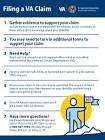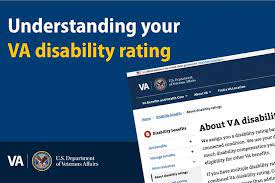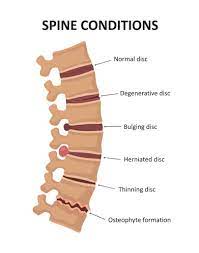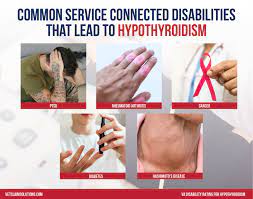VA Benefits Claim: A Guide to Accessing the Support You Deserve
For veterans who have honorably served our country, the Department of Veterans Affairs (VA) provides a range of benefits and services as a way of expressing gratitude and support. One crucial aspect of accessing these benefits is filing a VA benefits claim. In this article, we will guide you through the process and help you understand how to navigate it effectively.
What is a VA benefits claim?
A VA benefits claim is an official request made by a veteran or their eligible dependents to receive compensation or other forms of assistance from the VA. These claims cover various areas, including disability compensation, education and training, healthcare, home loans, pensions, and more. The purpose is to ensure that veterans receive the support they need after their service.
Understanding the types of claims:
Disability Compensation: This type of claim addresses service-connected disabilities or injuries that occurred during active duty or were aggravated by military service. It aims to provide financial assistance based on the severity of the disability.
Education and Training: Veterans seeking to pursue higher education or vocational training can file a claim for educational benefits under programs like the Post-9/11 GI Bill or Vocational Rehabilitation and Employment (VR&E).
Healthcare: The VA offers comprehensive healthcare services for eligible veterans. By filing a healthcare benefits claim, veterans can access medical treatments, hospital care, mental health services, prescription medications, and more.
Home Loans: Veterans looking to purchase or refinance a home can apply for VA-backed home loans with favorable terms such as low-interest rates and no down payment requirements.
Pensions: Elderly veterans with limited income may be eligible for pensions that provide financial assistance for basic needs such as housing and healthcare.
How to file a claim:
Gather necessary documents: Before starting your claim, gather important documents such as your discharge papers (DD-214), medical records, and any other relevant supporting documents.
Choose the right channel: You can file a claim online through the VA’s eBenefits portal, by mail using the appropriate forms, or with the assistance of an accredited Veterans Service Officer (VSO).
Complete the application: Provide accurate and detailed information in your application to ensure a smooth claims process. Be sure to include all relevant medical records and evidence supporting your claim.
Await processing: After submitting your claim, it will undergo a review process by the VA. This process may take some time, so it’s important to be patient.
Follow up: Stay informed about the status of your claim by regularly checking its progress online or contacting the VA’s toll-free number for updates.
Seek assistance if needed: If you encounter any difficulties during the claims process, consider reaching out to a VSO or veterans’ advocacy organizations for guidance and support.
Remember, filing a VA benefits claim is your right as a veteran, and it is essential to access the support you deserve. The VA is committed to ensuring that every eligible veteran receives fair consideration for their claims.
In conclusion, navigating the VA benefits claim process may seem daunting at first, but with proper knowledge and guidance, it can be a smoother experience. By understanding the types of claims available and following the necessary steps outlined above, you can access the benefits that recognize your sacrifice and service to our nation.
Frequently Asked Questions about VA Benefits Claims: A Comprehensive Guide
- How do I determine my VA benefits?
- How do I claim VA benefits?
- Which conditions qualify you for VA benefits?
- What are the easiest things to claim for VA?
How do I determine my VA benefits?
Determining your VA benefits involves assessing your eligibility for various programs and services offered by the Department of Veterans Affairs (VA). Here are the steps to help you determine your VA benefits:
- Gather information: Start by collecting important documents such as your discharge papers (DD-214), service records, and any relevant medical records. These documents will help determine your eligibility for specific benefits.
- Visit the VA website: Go to the official VA website (va.gov) and explore the Benefits section. It provides comprehensive information about different benefit programs available to veterans.
- Eligibility criteria: Review the eligibility criteria for each benefit program you’re interested in. The requirements may vary depending on factors such as your length of service, discharge status, service-connected disabilities, income level, and more.
- Benefit programs: Familiarize yourself with the various benefit programs offered by the VA, such as disability compensation, education and training benefits, healthcare services, home loans, pensions, vocational rehabilitation, and employment assistance.
- Online tools: Utilize online tools like the VA’s Benefits Navigator (benefits.va.gov/benefits) or Benefit Eligibility Screening Tool (vets.gov/benefits) to get personalized recommendations based on your specific circumstances.
- Contact a Veterans Service Officer (VSO): VSOs are trained professionals who can provide guidance and help determine your eligibility for VA benefits. They can assist with navigating the application process and answer any questions you may have.
- Apply for benefits: Once you have determined which benefits you are eligible for, follow the application process outlined by the VA for each specific program. This typically involves completing forms and providing supporting documentation.
- Seek assistance if needed: If you encounter challenges or need further clarification during the determination process or while applying for benefits, reach out to a VSO or veterans’ advocacy organizations for assistance.
Remember that determining your VA benefits may require careful evaluation of your individual circumstances. It’s important to be thorough and accurate when gathering information and completing applications to ensure you receive the benefits you are entitled to as a veteran.
How do I claim VA benefits?
To claim VA benefits, follow these steps:
Determine eligibility: Before filing a claim, ensure that you meet the eligibility criteria for the specific benefit you are seeking. Eligibility requirements can vary depending on factors such as military service, disability status, income level, and more. Visit the VA’s official website or contact their toll-free number to determine your eligibility.
Gather necessary documents: Collect all relevant documents to support your claim. This may include your discharge papers (DD-214), medical records, marriage certificates, birth certificates of dependents, and any other documentation related to your claim.
Choose the right channel: Decide how you want to file your claim. The VA offers multiple options:
a) Online: Visit the VA’s eBenefits portal (www.ebenefits.va.gov) and create an account to file your claim electronically.
b) By mail: Download the appropriate forms from the VA’s website and mail them along with supporting documents to the designated address.
c) With assistance: Seek help from an accredited Veterans Service Officer (VSO) who can guide you through the process and assist in filing your claim.
Complete the application accurately: Fill out all sections of the application form carefully and provide detailed information regarding your military service, medical conditions (if applicable), education history (if applying for education benefits), and any other required details. Be sure to include all supporting documentation as requested.
Submit your claim: Once you have completed the application form and gathered all necessary documents, submit them according to your chosen method—either online or by mail. If filing with a VSO’s assistance, they will guide you through this step.
Await processing: After submitting your claim, it will undergo a review process by the VA. This process may take some time due to varying factors such as workload and complexity of claims.
Follow up on your claim: Stay informed about the status of your claim by regularly checking its progress online through the eBenefits portal or by contacting the VA’s toll-free number. You can also sign up for notifications to receive updates on your claim’s progress.
Attend any required exams: In some cases, the VA may require you to undergo medical examinations or evaluations to assess your eligibility or the severity of your condition. Be sure to attend any scheduled appointments promptly.
Receive a decision: Once your claim has been processed, you will receive a decision from the VA regarding your eligibility for benefits. This decision will outline whether your claim was approved and provide information on the benefits you are entitled to receive.
Appeal if necessary: If you disagree with the decision made on your claim, you have the right to appeal within a specified timeframe. The appeals process can be complex, so consider seeking assistance from a VSO or veterans’ advocacy organizations to navigate this stage effectively.
Remember, each type of benefit may have its own specific requirements and procedures, so it’s essential to review the guidelines provided by the VA for each benefit you are claiming.
Which conditions qualify you for VA benefits?
The Department of Veterans Affairs (VA) provides benefits for various conditions, disabilities, and circumstances that are connected to military service. The eligibility criteria for VA benefits can be complex and depend on several factors. Here are some common conditions that may qualify you for VA benefits:
- Service-Connected Disabilities: Veterans who have disabilities or injuries that were incurred or aggravated during active military service may be eligible for disability compensation. These disabilities can include physical injuries, mental health conditions, chronic illnesses, or any other condition related to military service.
- Agent Orange Exposure: Veterans who served in certain locations during specific time periods and were exposed to Agent Orange or other herbicides may be eligible for compensation and healthcare benefits related to conditions associated with exposure, such as certain cancers, respiratory disorders, and diabetes.
- Gulf War Illness: Veterans who served in the Southwest Asia theater of operations during the Gulf War (1990-1991) and experience unexplained chronic symptoms such as fatigue, joint pain, headaches, gastrointestinal issues, or cognitive difficulties may be eligible for benefits related to Gulf War Illness.
- Post-Traumatic Stress Disorder (PTSD): Veterans who have experienced traumatic events during their military service and subsequently developed PTSD may be eligible for compensation and treatment options through the VA.
- Military Sexual Trauma (MST): Veterans who have experienced sexual assault or harassment while serving in the military may be eligible for VA benefits related to MST, including counseling services and treatment.
- Prisoner of War (POW) Status: Former prisoners of war who were held captive by enemy forces during their military service are generally eligible for comprehensive VA benefits.
- Purple Heart Recipients: Veterans who received a Purple Heart medal due to being wounded in combat are eligible for enhanced benefits through the VA.
It’s important to note that this list is not exhaustive, and there are many other conditions and circumstances that may qualify you for VA benefits. The best way to determine your eligibility is to contact the VA directly or consult with an accredited Veterans Service Officer (VSO) who can guide you through the process and help you understand which benefits you may be eligible for based on your specific situation.
What are the easiest things to claim for VA?
When it comes to filing a VA benefits claim, the ease of the process can vary depending on individual circumstances. However, there are a few types of claims that are generally considered relatively straightforward. Here are some examples:
- Service-Connected Disabilities: If you have a disability or injury that occurred during your active duty service or was aggravated by it, filing a disability compensation claim may be relatively straightforward. The key is to provide sufficient medical evidence and documentation to support your claim.
- VA Healthcare Benefits: Accessing VA healthcare benefits is typically easier for veterans who meet the eligibility criteria. The VA offers comprehensive healthcare services, including medical treatments, mental health services, prescription medications, and more.
- GI Bill Education Benefits: For veterans seeking educational opportunities, applying for GI Bill education benefits can be a relatively straightforward process. Programs like the Post-9/11 GI Bill provide financial assistance for tuition fees, housing allowances, and other educational expenses.
- Dependency and Indemnity Compensation (DIC): DIC benefits are available to surviving spouses and dependents of veterans who died due to service-connected disabilities or injuries. While this claim requires providing evidence of the veteran’s cause of death and the relationship to the survivor, it can be relatively simple if all necessary documentation is readily available.
- Burial Benefits: When a veteran passes away, their family members may be eligible for burial benefits provided by the VA. These benefits include reimbursement for burial expenses, headstones or markers, and even burial in national cemeteries.
It’s important to note that while these claims may generally be considered easier than others, each case is unique and may have specific requirements or circumstances that could impact the ease of filing a claim. It’s always advisable to gather all necessary documentation and seek assistance from accredited Veterans Service Officers (VSOs) or veterans’ advocacy organizations if needed to ensure a smooth claims process.




